Introduction to when to prune lilly pilly
Welcome to our comprehensive guide on pruning Lilly Pilly plants, brought to you by PlantCoachCenter. In this article, we will delve into the art of pruning and its significance in caring for Lilly Pilly plants. Whether you are a seasoned gardener or a beginner, this guide will equip you with the knowledge and techniques needed to maintain healthy and vibrant Lilly Pilly specimens.
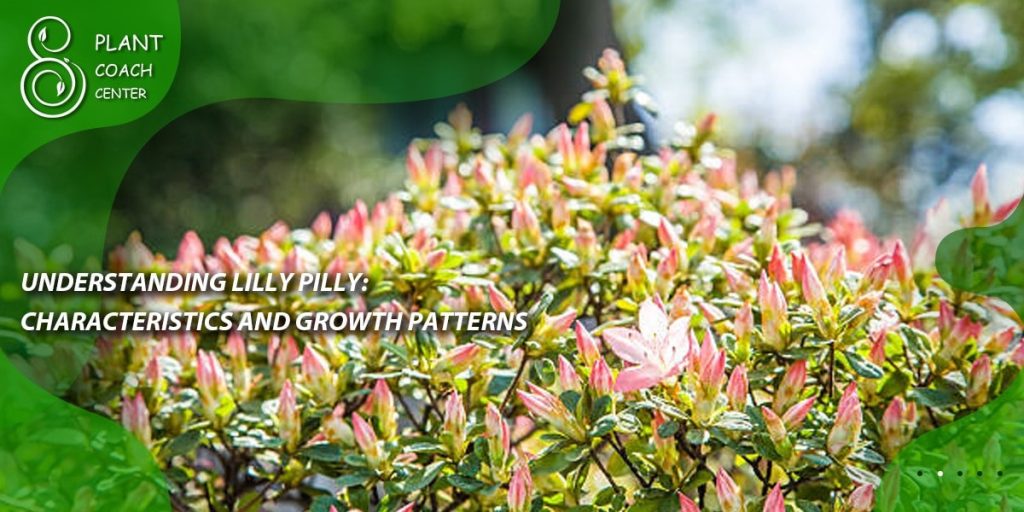
Understanding Lilly Pilly: Characteristics and Growth Patterns
Lilly Pilly (Syzygium) is an evergreen plant known for its lush foliage, colorful berries, and versatility in landscaping. Understanding its characteristics and growth patterns is crucial to effectively prune and care for these plants. Let’s explore the different species and varieties, their life cycle, and the factors that influence their growth and pruning timelines.
– Introduction to Lilly Pilly (Syzygium)
Lilly Pilly, also known as Syzygium, is a group of versatile evergreen plants native to Australia. With their vibrant foliage, attractive flowers, and edible berries, Lilly Pilly plants have gained popularity in gardens worldwide.
– Different Species and Varieties of Lilly Pilly
There are numerous species and varieties of Lilly Pilly, each with its unique characteristics and growth habits. Some popular varieties include Syzygium australe (Brush Cherry), Syzygium luehmannii (Riberry), and Syzygium wilsonii (Powderpuff Lilly Pilly). Understanding the specific traits of each variety will help you tailor your pruning techniques accordingly.
– Life Cycle and Growth Phases of Lilly Pilly
Lilly Pilly plants go through distinct growth phases, including germination, establishment, growth, and maturity. Familiarizing yourself with these phases will allow you to determine the appropriate timing for pruning and other maintenance tasks.
– Factors Influencing Lilly Pilly Growth and Pruning Timelines
Several factors impact the growth and development of Lilly Pilly plants. These include climate, soil conditions, sunlight exposure, and water availability. By considering these factors, you can better plan and schedule your pruning activities for optimal results.
The Art of Pruning Lilly Pilly: Techniques and Tools
Pruning is both an art and a science. Mastering the proper techniques and using the right tools will enable you to shape and maintain Lilly Pilly plants effectively. Let’s explore the essential pruning tools and learn the proper techniques to ensure the health and aesthetics of your plants.
– Essential Pruning Tools for Lilly Pilly
To perform successful pruning, you’ll need a few essential tools. These include sharp bypass pruners, pruning shears, gloves for protection, and possibly a pruning saw for more extensive cuts. Investing in high-quality tools will make your pruning tasks easier and more efficient.
– Proper Pruning Techniques for Maximum Health and Aesthetics
Pruning Lilly Pilly requires precision and care. The following techniques will help you maintain the health and aesthetics of your plants:
– Thinning: Removing selected branches to improve air circulation and sunlight penetration.
– Heading Back: Trimming the tips of branches to promote bushier growth.
– Crown Reduction: Reducing the height and size of the plant while maintaining its shape.
– Renewal Pruning: Removing older branches to encourage new growth and rejuvenation.
– Shaping and Training: Pruning to achieve desired forms, such as topiary or espalier.
– Safety Precautions for Pruning Lilly Pilly
Pruning can be physically demanding, and safety should be a priority. Remember to wear protective gear, such as gloves, goggles, and sturdy footwear. Take care when using sharp tools and ensure you are on stable footing to avoid accidents.
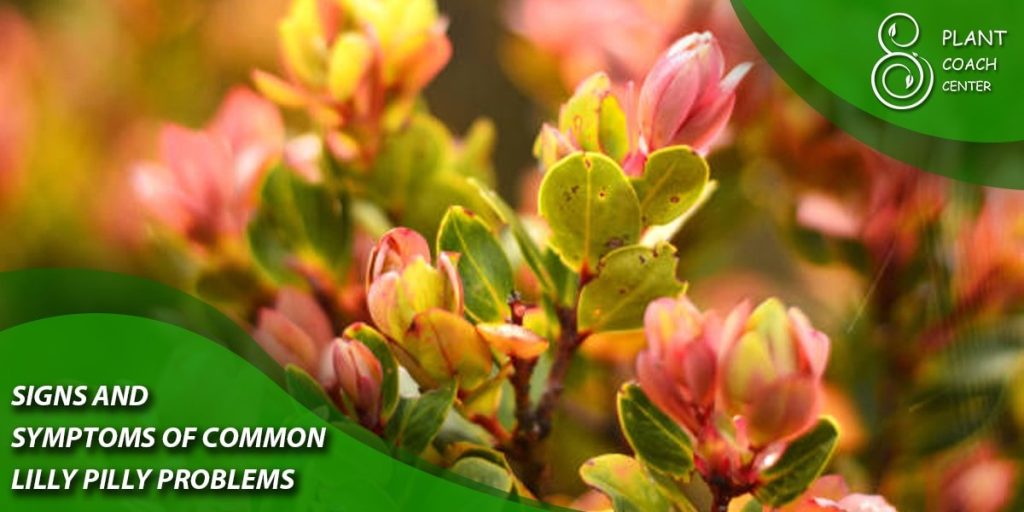
Signs and Symptoms of Common Lilly Pilly Problems
Lilly Pilly plants, like any other, are susceptible to various issues that can affect their health and vitality. Recognizing and addressing these problems promptly is crucial for maintaining thriving plants. Let’s explore common signs and symptoms of nutrient deficiencies, pest infestations, and diseases that can impact Lilly Pilly.
– Identifying and Treating Nutrient Deficiencies
Nutrient deficiencies can manifest through various symptoms such as yellowing leaves, stunted growth, or leaf discoloration. Understanding the specific nutrient requirements of Lilly Pilly and recognizing deficiency symptoms will help you implement appropriate corrective measures. These may include adjusting soil pH, applying fertilizers, or adding organic amendments.
– Recognizing and Managing Pest Infestations
Lilly Pilly can attract pests like scale insects, caterpillars, or aphids, which can damage the foliage and impact the overall health of the plant. Regularly inspecting your plants for signs of infestation, such as distorted leaves or sticky residue, will allow you to take timely action. Integrated pest management techniques, including natural predators or targeted insecticides, can help control these pests effectively.
– Dealing with Diseases and Fungal Infections
Fungal infections and diseases, such as powdery mildew or leaf spot, can weaken Lilly Pilly plants if left untreated. Look for symptoms like discolored patches, powdery coatings, or wilting leaves. Applying appropriate fungicides, improving air circulation, and practicing good sanitation measures, such as removing infected plant material, can help prevent and manage these diseases effectively.
When to Prune Lilly Pilly: Optimal Timing and Frequency
Pruning at the right time and frequency is crucial to promote healthy growth and maintain the desired shape of Lilly Pilly plants. Understanding the growth cycle and identifying the appropriate pruning windows will ensure optimal results. Let’s explore when and how often to prune for different purposes.
– Understanding the Growth Cycle of Lilly Pilly
Lilly Pilly plants go through distinct growth phases, including active growth, flowering, and fruiting. Familiarize yourself with these stages to determine the best time for pruning. In general, pruning is recommended after flowering and fruiting to allow the plant to allocate energy for new growth.
– Determining the Best Time to Prune Based on Growth Phases
Pruning timing may vary depending on your specific goals. For maintenance pruning, which focuses on removing dead or damaged branches, you can prune as needed throughout the year. However, for more extensive shaping or rejuvenation pruning, it’s best to wait until after the flowering and fruiting stages.
– Frequency of Pruning for Maintenance and Shaping
Regular maintenance pruning helps keep Lilly Pilly plants tidy and healthy. This typically involves removing deadwood, thinning overcrowded branches, and controlling overall size. For shaping purposes, pruning can be more aggressive, but always aim to maintain the natural form and structure of the plant. Remember, moderation is key to avoid excessive stress on the plant.
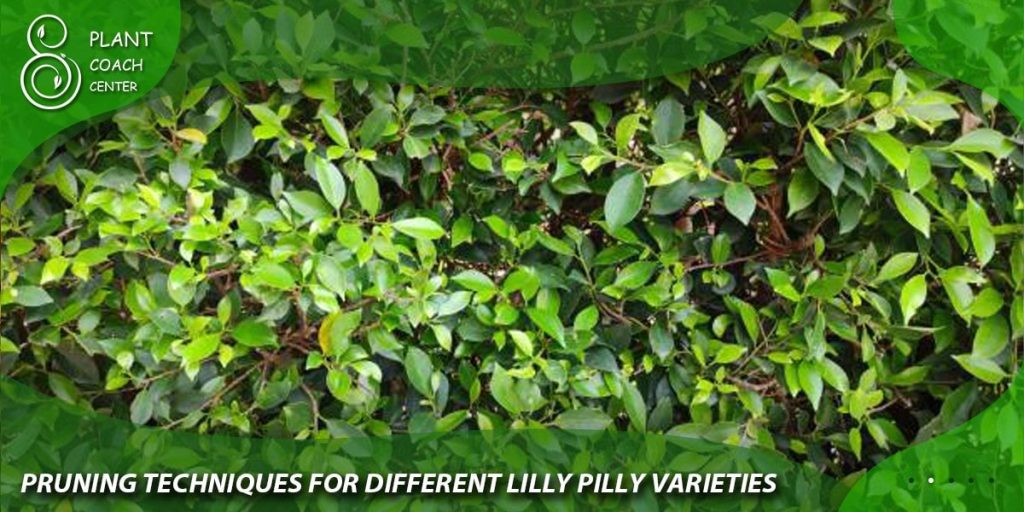
Pruning Techniques for Different Lilly Pilly Varieties
Different Lilly Pilly varieties may have specific growth habits and pruning requirements. Understanding the unique characteristics of each variety will allow you to tailor your pruning techniques for optimal results. Let’s explore pruning guidelines for some popular Lilly Pilly varieties.
– Pruning Guidelines for Syzygium australe (Brush Cherry)
Syzygium australe, commonly known as Brush Cherry, is a popular Lilly Pilly variety with dense foliage and glossy leaves. Pruning techniques for this variety focus on maintaining its natural form, promoting air circulation, and controlling its size. Regularly thinning out crowded branches and selectively pruning to encourage new growth will help keep Syzygium australe healthy and visually appealing.
– Pruning Tips for Syzygium luehmannii (Riberry)
Syzygium luehmannii, or Riberry, is valued for its edible berries and attractive pink new growth. When pruning Riberry, it’s important to strike a balance between maintaining its natural shape and encouraging fruit production. Pruning techniques may involve light heading back to promote a bushier habit and selective removal of older branches to stimulate new growth and fruiting.
– Pruning Strategies for Syzygium wilsonii (Powderpuff Lilly Pilly)
Syzygium wilsonii, also known as Powderpuff Lilly Pilly, features delightful fluffy flowers and dense foliage. Pruning techniques for this variety focus on maintaining its compact shape, promoting flowering, and controlling overall size. Regularly removing spent flowers and selectively pruning to shape the plant will help Syzygium wilsonii thrive.
Pruning for Health and Vigorous Growth
Pruning plays a vital role in maintaining the health and vitality of Lilly Pilly plants. By applying proper pruning techniques, you can improve air circulation, stimulate new growth, and prevent disease. Let’s explore how pruning contributes to the overall health and vigor of your plants.
– Promoting Air Circulation and Sunlight Penetration
Thinning out dense foliage through selective pruning improves air circulation within the plant canopy. This reduces the risk of fungal diseases and allows sunlight to reach inner branches, promoting photosynthesis and overall plant health.
– Stimulating New Growth and Density Control
Selective pruning techniques, such as heading back and renewal pruning, encourage the development of new shoots and branches. This stimulates denser growth and helps maintain the desired shape of the Lilly Pilly plant.
– Pruning for Disease Prevention and Plant Longevity
Regular pruning removes dead or diseased branches, reducing the risk of pathogens spreading. It also improves the overall health and longevity of the plant by redirecting energy toward healthy growth and preventing the decline of older, less productive branches.
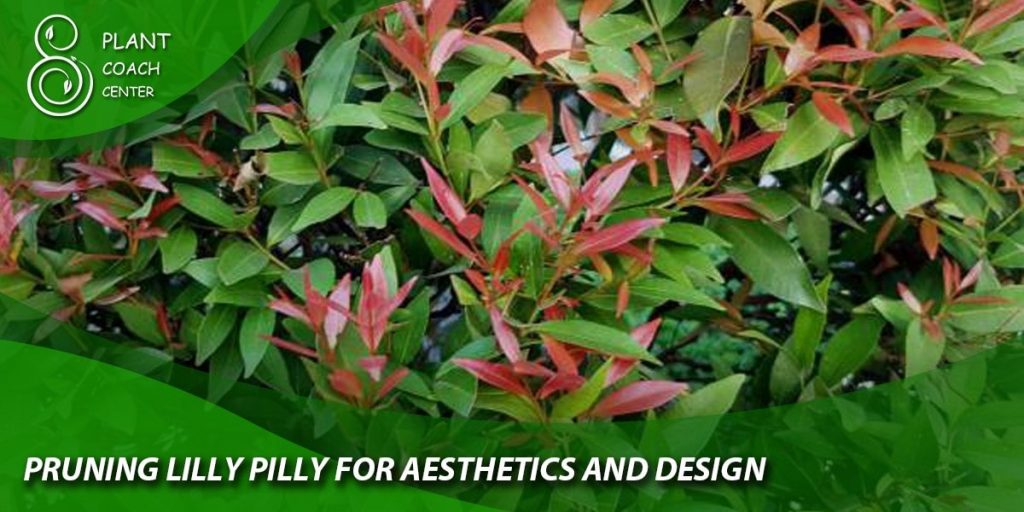
Pruning Lilly Pilly for Aesthetics and Design
Lilly Pilly’s versatile growth habit makes it suitable for various landscaping designs. Pruning techniques can be employed to shape and train the plants, creating aesthetically pleasing forms. Let’s explore how pruning can enhance the aesthetics and design of your Lilly Pilly plants.
– Shaping and Training Techniques for Form and Structure
Pruning allows you to shape Lilly Pilly plants according to your desired form and structure. Techniques like topiary, where plants are pruned into geometric shapes, and espalier, where they are trained against a flat surface, can add unique visual elements to your garden.
– Topiary and Espalier: Creating Unique Design Elements
Topiary involves pruning Lilly Pilly plants into intricate shapes, such as spheres, cones, or spirals. Espalier, on the other hand, is a technique where the plant is trained against a wall or trellis, creating a flat, artistic pattern. These techniques can add elegance and charm to your outdoor spaces.
– Pruning for Hedge Maintenance and Privacy Screening
Lilly Pilly is a popular choice for hedges and privacy screens due to its dense foliage. Pruning techniques such as regular trimming and selective thinning help maintain the desired height, shape, and density of the hedge, ensuring its functionality and aesthetic appeal.
After Pruning Care and Maintenance
After pruning your Lilly Pilly plants, it’s essential to provide proper care and maintenance to support their recovery and continued growth. Let’s explore the post-pruning care and maintenance practices that will help your plants thrive.
– Watering and Irrigation
After pruning, ensure that your Lilly Pilly plants receive adequate water to support their recovery. Water deeply but avoid overwatering, as excessive moisture can lead to root rot. Monitor soil moisture levels and adjust watering accordingly, considering factors such as weather conditions and soil drainage.
– Fertilizing and Nutrient Management
Providing appropriate nutrients is essential for the health and vigor of your Lilly Pilly plants. After pruning, consider applying a balanced slow-release fertilizer to replenish essential nutrients. Follow the recommended application rates and timing based on the specific fertilizer product and the needs of your plants.
– Mulching and Weed Control
Applying a layer of organic mulch around the base of your Lilly Pilly plants helps conserve moisture, control weeds, and regulate soil temperature. Ensure that the mulch is applied a few inches away from the plant’s trunk to prevent moisture-related issues and trunk rot.
– Monitoring and Pest/Disease Control
Regularly monitor your pruned Lilly Pilly plants for signs of pests or diseases. Early detection allows for prompt intervention and treatment. Implement integrated pest management strategies, such as natural predators or targeted insecticides, to control pests effectively. In the case of diseases, follow appropriate treatment methods, including the use of fungicides or cultural practices like improving air circulation.
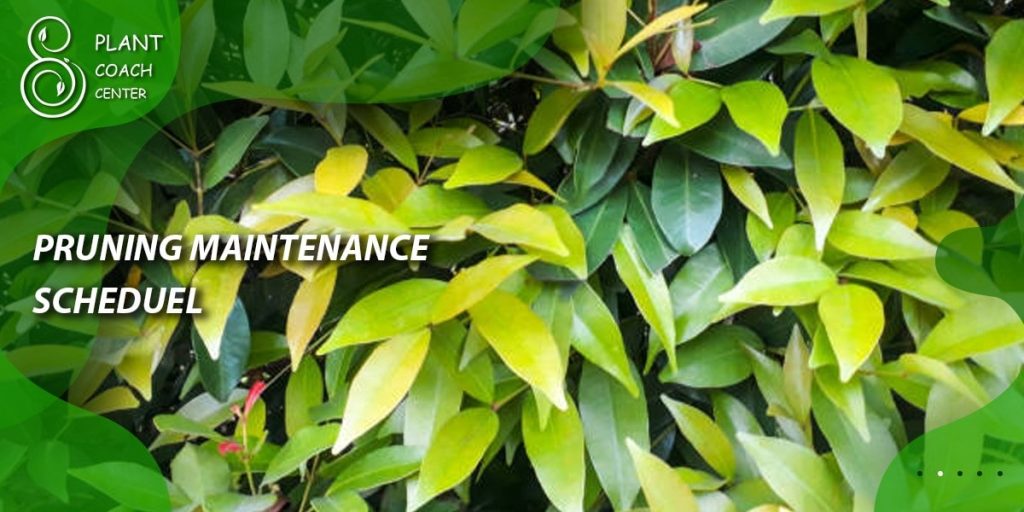
– Pruning Maintenance Schedule
Pruning is an ongoing process, and regular maintenance is necessary to keep your Lilly Pilly plants healthy and well-groomed. Establish a pruning maintenance schedule based on the growth habit, pruning goals, and specific requirements of your Lilly Pilly variety. Regularly inspect your plants and perform maintenance pruning as needed to remove deadwood, encourage new growth, and maintain their shape.
Conclusion
Pruning Lilly Pilly plants is a skill that requires knowledge, patience, and careful execution. By understanding the growth patterns, pruning techniques, and specific requirements of your Lilly Pilly variety, you can shape and maintain beautiful, healthy plants.
Remember to prioritize plant health, aesthetics, and safety while pruning, and provide proper care and maintenance afterward. With this comprehensive guide, you are equipped to become a skilled plant coach for your Lilly Pilly plants, ensuring their longevity and visual appeal in your garden.
Remember to visit plantcoachcenter.com for more information and resources on plant coaching and gardening tips. Happy pruning!
What are common problems that can affect Lilly Pilly plants?
Nutrient deficiencies, pest infestations, and diseases.
When is the best time to prune Lilly Pilly plants?
After flowering and fruiting.
How often should I prune Lilly Pilly plants?
Regularly for maintenance, after flowering for shaping.
How does pruning benefit Lilly Pilly plants?
Promotes air circulation, stimulates new growth, and prevents disease.







